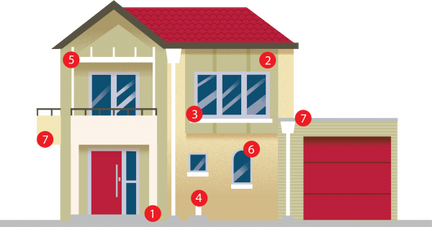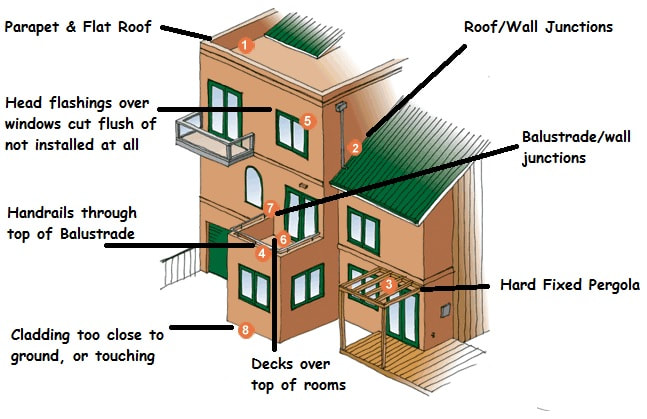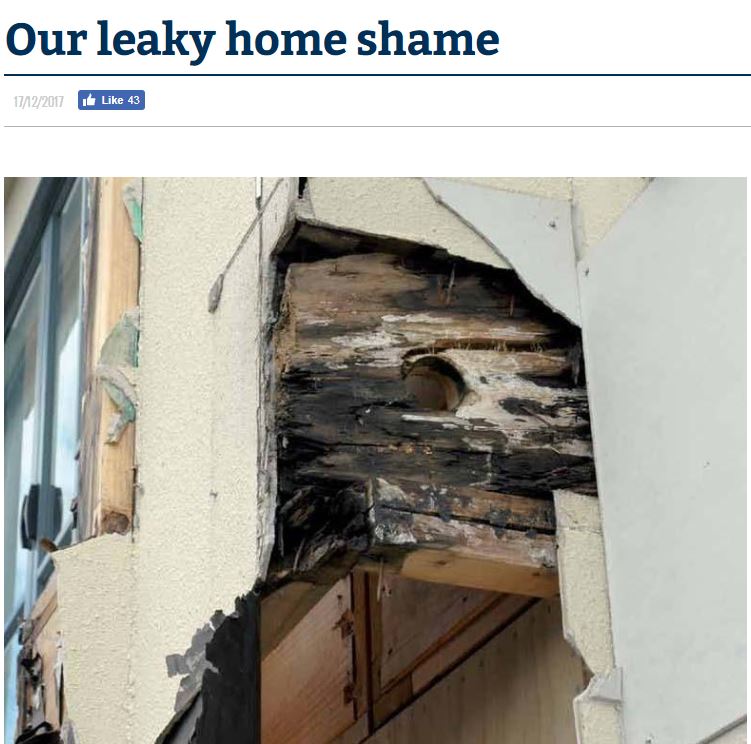|
There are many monolithic cladding systems but some are more prone to leaky home problems.
Buildings with structural framing made from untreated timber along with non-cavity monolithic cladding systems are particularly at risk. If these cladding systems do not have a gap between the timber framing and the cladding, water can make its way in. Once in, it can't drain away or dry out and the trapped water causes the timber to rot. This is known as; Leaky Home Syndrome. Because the moisture is hidden, you may not be aware there is a problem for quite some time, so preventative maintenance to keep water out is critical. Which Cladding Systems Are Common In Leaky Homes? Monolithic claddings commonly involved with leaky home problems are those with a plaster type finish with a waterproof coating and include: ▪ Stucco ▪ EIFS (Exterior Insulation and Finish Systems). ▪ Texture coated fibre-cement The problem with these cladding systems are not the cladding themselves, but the way many of them have been installed and finished. If you have any concerns, you should seek professional advice. Stucco Cement-based plaster is applied over a variety of backings including fibre- cement and plywood sheeting. It is then painted to ensure it is waterproof. This type of cladding has been used since the 1920s. If you have this system, check carefully for cracking of the plaster, check around flashings and where the plaster has been penetrated. EIFS EIFS (External Insulation and Finish System) also known as External foam cladding. These cladding sheets are made up of polystyrene boards with a plaster and paint finish. Pay particular attention to the corners of windows and exposed edges and anywhere that the paint finish might wear or crack. Do not attempt to repair with sealant but contact a professional. Texture Coated Fibre Cement This type of cladding has been around longer than EIFS and is made from cement, fine sand and cellulose, with a textured coating applied and painted after the sheets have been installed. Because this system relies on a waterproof coating, it must be maintained. Look for cracks in the jointing which must be raked out and re-formed. Do not attempt to seal with sealant if you have problems, but contact a professional. The Consumer Build website has a comprehensive description of problems with these cladding types. Preventative Steps The main things to watch out for are signs that water may have already got in such as cracks, staining, mould or moss. If you are concerned, non- invasive testing can be done (link to page) For general maintenance, wash the cladding regularly which will extend the life of the materials. It’s particularly important for houses near the sea. Before you wash, check for cracks or damage. To wash: ▪ Use a soft brush and low-pressure hose. Don’t use a high pressure water blaster as it can damage claddings. ▪ Concentrate on areas rain doesn't reach, like walls sheltered by eaves. ▪ Hose off residue with plenty of water. You may need to use cleaning products. Unfortunately if the design of a building is inherently flawed and/or poorly detailed, comprehensive work beyond maintenance may be required to solve the leaking long term. Leaky Home Worries? Get your property moisture screened/checked/tested? call us on 021 143 2995
4 Comments
20/5/2022 04:02:05 am
Very well explained. Thanks for sharing the detailed process of this. This has been helpful!
Reply
John Roberts
9/6/2022 09:25:33 am
Hi,
Reply
8/9/2022 03:20:19 pm
Property inspectors are aware that leaky homes don't do so because of their monolithic cladding; rather, they leak as a result of improper design, construction, or installation. Untreated wood, flat roofs, inadequate flashings, and a lack of vented spaces between the outside wall coverings and inner lining are the hallmarks of a leaky house from the 1990s. But not all buildings with alternative cladding designs are impervious to leaks, just as not all monolithic structures are, thus it is advisable to always hire a construction inspector.
Reply
Leave a Reply. |
BLOG
June 2024
Categories |
LocationLocated on Grahams Road, we are right in the centre of Christchurch, making it a lot easier on the whole for people to reach out to us for help at any time during the day. |
|






 RSS Feed
RSS Feed